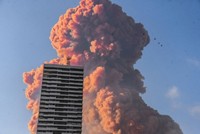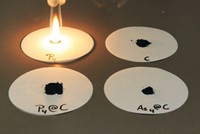Advertisement
Grab your lab coat. Let's get started
Welcome!
Welcome!
Create an account below to get 6 C&EN articles per month, receive newsletters and more - all free.
It seems this is your first time logging in online. Please enter the following information to continue.
As an ACS member you automatically get access to this site. All we need is few more details to create your reading experience.
Not you? Sign in with a different account.
Not you? Sign in with a different account.
ERROR 1
ERROR 1
ERROR 2
ERROR 2
ERROR 2
ERROR 2
ERROR 2
Password and Confirm password must match.
If you have an ACS member number, please enter it here so we can link this account to your membership. (optional)
ERROR 2
ACS values your privacy. By submitting your information, you are gaining access to C&EN and subscribing to our weekly newsletter. We use the information you provide to make your reading experience better, and we will never sell your data to third party members.
Environment
Safer emergency flares, thanks to a less toxic and more stable chemical for making smoke
Phosphorus(V) nitride could replace red phosphorus, which degrades into toxic compounds and can unexpectedly explode with friction
by Sarah Everts
November 21, 2016
| A version of this story appeared in
Volume 94, Issue 46
Many emergency flares rely on a material called red phosphorus, one of the natural forms of the element, to produce billowing smoke that draws the rescuers’ attention. Researchers have been seeking an alternative because red phosphorus has multiple safety flaws. For example, it can ignite with a bit of impact or friction; red phosphorus is often added to match heads to help them ignite. Although useful in a match, the compound’s propensity to explode when handled in bulk amounts is a danger to factory workers and during transportation. Furthermore, when the chemical is exposed to moist air—common in marine emergency situations—it can degrade into toxic phosphine, PH3, which causes a range of symptoms in people, including vomiting, breathing difficulty, and pulmonary edema. A team led by Stanisław Cudziło of the Military University of Technology in Warsaw and Ernst-Christian Koch of Lutradyn, an energetic materials company, have come up with a safer alternative: phosphorus(V) nitride, P3N5 (Angew. Chem. Int. Ed. 2016, DOI: 10.1002/anie.201609532). Unlike red phosphorus, P3N5 won’t ignite with friction or sudden impact, nor will it degrade in moist air to harmful compounds.





Join the conversation
Contact the reporter
Submit a Letter to the Editor for publication
Engage with us on Twitter